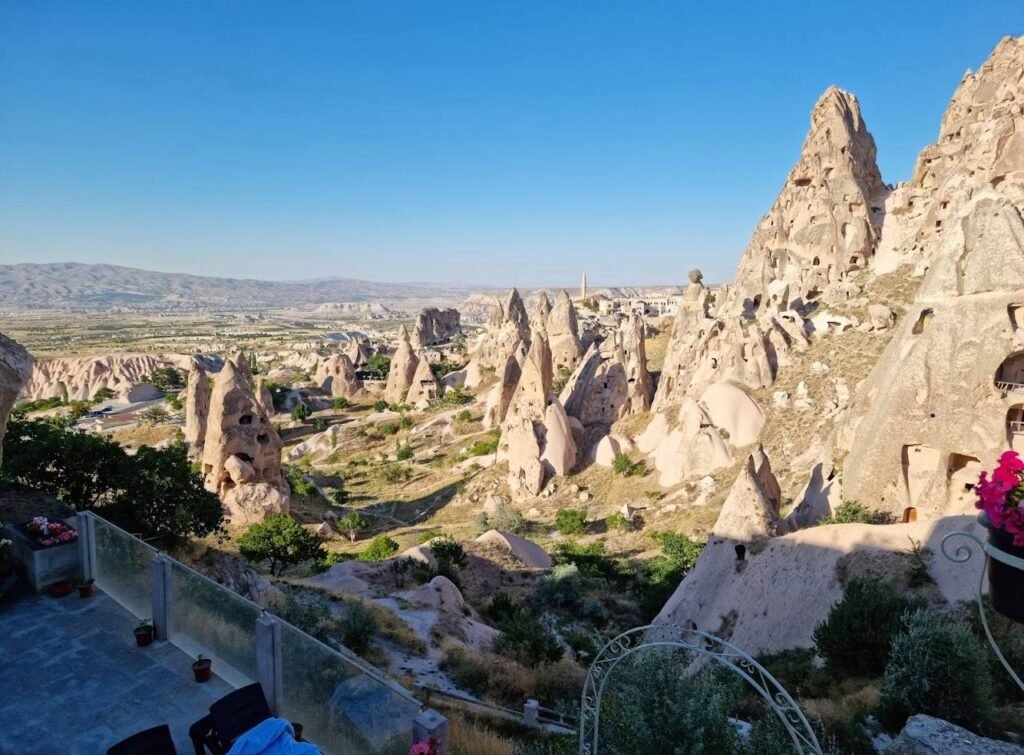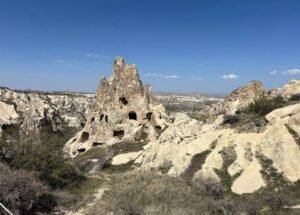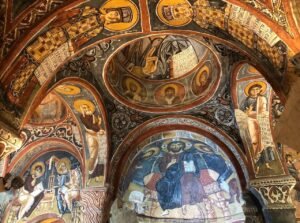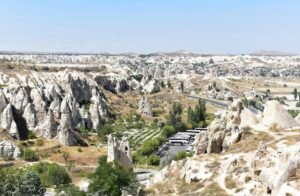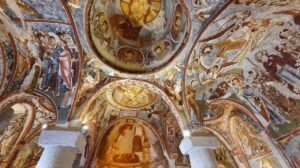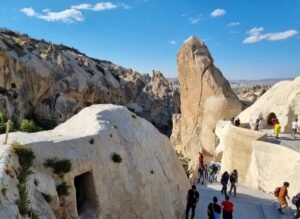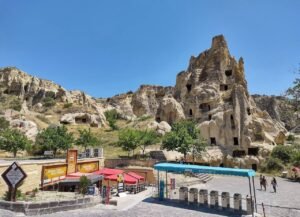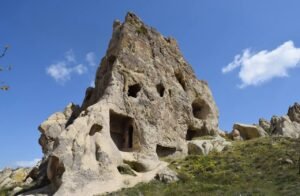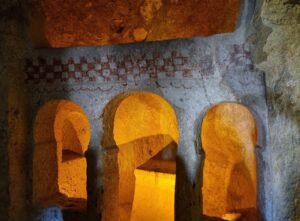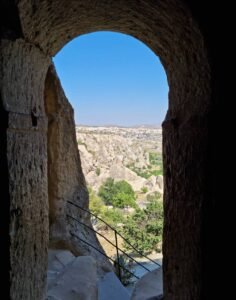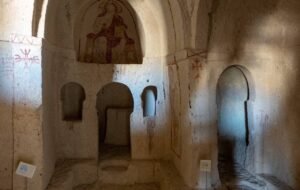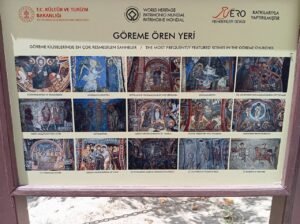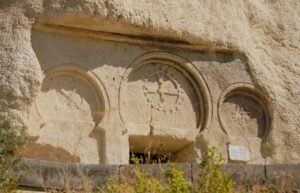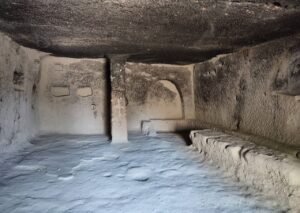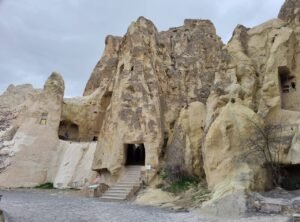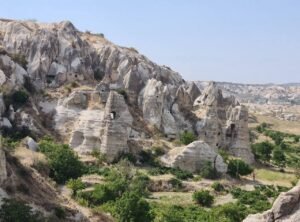Description
Göreme Open Air Museum: A Portal to Cappadocia’s Byzantine Soul
Tucked into the heart of Cappadocia’s fantastical landscape of fairy chimneys and lunar valleys lies a treasure trove of early Christian history and cave-carved wonder—the Göreme Open Air Museum. Located just a short distance from the town of Göreme in Nevşehir Province, central Turkey, this UNESCO World Heritage Site is one of the most visited attractions in the country. Rich in religious heritage, geological marvels, and cultural insight, the museum offers travelers an unforgettable journey into a bygone era.
A Living Testament to Early Christianity
The Göreme Open Air Museum is not a museum in the conventional sense with artifacts displayed in glass cases. Instead, it is a vast monastic complex carved directly into the soft volcanic rock of Cappadocia’s valleys. Dating back to the 10th, 11th, and 12th centuries, the complex served as a hub for monastic life, where monks lived, prayed, and taught in isolated harmony.
The Byzantine Christians who settled in this region carved chapels, churches, and monasteries into the rock, often elaborately decorating their interiors with stunning frescoes. These wall paintings, depicting scenes from the New Testament, have withstood the test of time, offering rare insights into early Christian art and religious practice.
Exploring the Rock-Cut Churches
The Göreme Open Air Museum comprises more than a dozen rock-cut churches and chapels, each with its own unique design, artwork, and spiritual atmosphere. Among them, several stand out as particularly significant:
1. Tokalı Church (The Buckle Church)
This is the largest and perhaps the most impressive church in the museum. It consists of four chambers, with the main chamber adorned with brilliant blue-hued frescoes illustrating the life of Jesus Christ in rich detail. These paintings, dating back to the 10th century, showcase advanced artistry and theological depth, making Tokalı Church a must-see highlight.
2. Elmali Church (The Apple Church)
Named either for a nearby apple tree or an apple depicted in a fresco, Elmali Church is small but exquisite. Its cross-in-square plan and vibrant 11th-century frescoes depict scenes like the Last Supper and the Crucifixion. The vivid reds and earthy tones give it a warm, serene feel.
3. Yılanlı Church (The Snake Church)
This church is named after a dramatic fresco showing Saint George slaying a serpent. Yılanlı is especially intriguing for its depictions of saints and moral lessons. Though its artwork is more symbolic and linear in style, it offers visitors a different artistic perspective on Christian narrative themes.
4. Karanlık Church (The Dark Church)
Karanlık Church is named for its small window, which has helped preserve the frescoes in near-perfect condition by minimizing light exposure. For a small additional fee, visitors can enter and marvel at some of the best-preserved Byzantine art in the region. Scenes such as the Betrayal of Judas and the Resurrection of Christ are particularly powerful and emotionally resonant.
5. Çarıklı Church (The Sandal Church)
This chapel gets its name from the footprint-like marks on the floor beneath a fresco of the Ascension. Its frescos are detailed and colorful, depicting scenes from the life of Christ with grace and clarity.
Life in the Monastery
In addition to the churches, the Göreme Open Air Museum includes living quarters, dining halls (refectories), kitchens, and wine cellars carved directly into the rock. These communal areas paint a vivid picture of monastic life. Visitors can almost imagine the monks going about their daily routines—cooking, meditating, teaching, and seeking spiritual solitude in the heart of nature.
The layout of the site reflects both religious devotion and the need for protection. Carving their sanctuaries into the cliffs offered early Christians a place of safety during periods of persecution, particularly under Roman rule before Christianity was legalized.
A Geological Marvel
The landscape of Cappadocia is as much a part of the Göreme experience as the churches themselves. Formed by ancient volcanic eruptions and shaped over millennia by wind and water erosion, the region’s soft tuff rock made it possible to carve entire complexes into the cliffs.
Walking through the Göreme Open Air Museum feels like stepping into another world—a place where faith, art, and nature are seamlessly intertwined. The surreal terrain surrounding the museum includes towering fairy chimneys and honeycombed hills, creating a dreamlike backdrop to the spiritual and historical treasures housed within.
Visiting Tips
- Timing: The museum is open year-round, but the best times to visit are in spring (April-May) and fall (September-October) when the weather is mild and the crowds are thinner.
- Tickets: Entry requires a ticket, with separate admission fees for special areas like Karanlık Church. A Museum Pass Turkey may offer better value if you plan to visit multiple historical sites.
- What to Wear: Comfortable shoes are a must, as the terrain can be uneven. Modest attire is appreciated in respect to the religious nature of the site.
- Guided Tours: To get the most out of your visit, consider joining a guided tour or renting an audio guide. The historical context adds depth to the visual experience.
Conclusion
The Göreme Open Air Museum is more than just an attraction—it's a portal to the spiritual and artistic soul of Byzantine Cappadocia. With its breathtaking rock-carved architecture, intricate frescoes, and dramatic natural setting, the site offers an unforgettable encounter with Turkey’s rich cultural and religious history.
Whether you're a history buff, an art lover, a spiritual seeker, or a casual traveler, Göreme invites you to step into its cave-hewn sanctuaries and feel the timeless resonance of a sacred world carved in stone.
Location
-
İsali - Gaferli - Avcılar, 50180 Göreme/Nevşehir Merkez/Nevşehir
